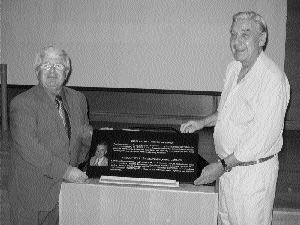Vancouver — Manitoba is pulling out the stops to lure more mining and exploration companies to the province. In a recent cross-country tour, government officials offered generous exploration incentives and tax credits for companies and prospectors, including direct assistance for programs in areas affected by mine closures.
As an added incentive, the government will release 3,000 assessment files to the public for the first time in November. Three years ago, the province changed its Mines Act to reduce confidentiality to three years from infinity, in some cases. The files will be available on the Internet and showcased at the Manitoba Mining and Minerals Convention, slated for Nov. 17-19 in Winnipeg.
“We see mining as a way to create wealth,” says James Rondeau, Manitoba’s Minister of Industry, Economic Development. “Mining is the only economy in the northern part of the province. We want to send the message that we’re open for business.”
Manitoba’s mineral sector generates more than $1 billion annually from world-class deposits of nickel, copper, gold, zinc and tantalum. The province also has potential for platinum group elements, titanium, vanadium, diamonds, chromite and silica.
Rondeau says Manitoba is under-explored, relative to its geological potential and “mining-friendly” environment. He notes that B.C.’s Fraser Institute rated the province as having the most favourable policies for mining and exploration in all of Canada.
Exploration spending is expected to total $37 million this year, with almost half that directed to gold exploration, including the search for high-grade deposits similar to those in the Red Lake camp of Ontario.
The government is seeing more exploration directed at nickel, including in the Thompson camp, which produces about 20% of Canada’s nickel. The belt’s favourable geology extends for at least 350 km, with the southern part obscured by Paleozoic sediments.
Another exploration hotspot for nickel is the Lynn Lake/Leaf Rapids areas, where only one major nickel deposit has been found to date. Lynn Lake has long been overshadowed by Thompson, yet is the fourth largest nickel deposit in Canada, after Sudbury, Thompson, and Voisey’s Bay. The mine operated continuously from 1953 through 1976, and produced 20.15 million tonnes of 1.02% nickel and 0.53% copper.
Gary Ostry, manager of mineral policy and business development, says Manitoba is also prospective for diamonds, despite complex till stratigraphy that has hindered exploration in the past. Several “hotspot tracks” transect the northern part of the province, where companies are actively exploring for diamonds.
Government officials are also seeing renewed interest in uranium exploration, notably in the Wollaston belt in the far northwestern portion of the province.
Ostry says the government has no restrictions or “issues” with uranium exploration or mining, should economic deposits be found.
More information about Manitoba’s forthcoming mining convention can be found on the government website: www.mineralsconvention.com or by calling 1-800-223-5215.


Be the first to comment on "Manitoba promotes exploration incentives"